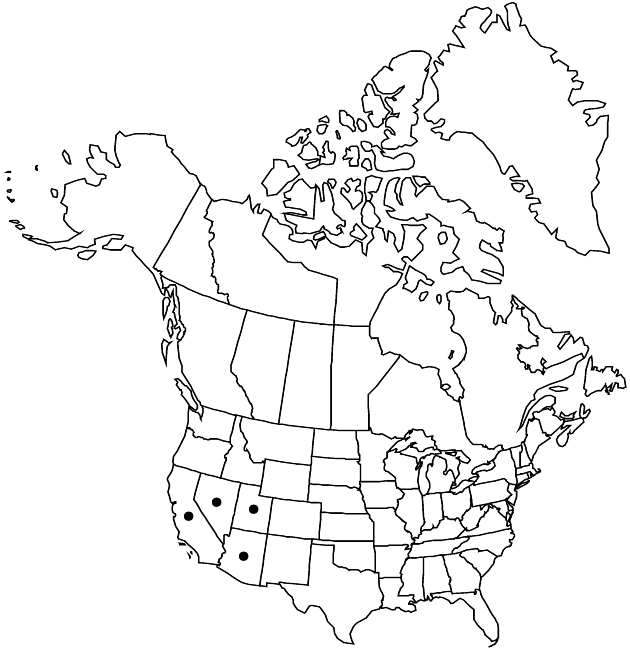Difference between revisions of "Palafoxia arida"
Madroño 23: 79. 1975.
FNA>Volume Importer |
(No difference)
|
Revision as of 01:09, 27 July 2019
Annuals, 10–200 cm. Stems scabrous to nearly glabrous, sometimes distally stipitate-glandular. Leaf blades lance-linear to linear, 20–120 × 2–55 mm. Involucres cylindric to narrowly turbinate. Phyllaries ± equal, 10–25 × 1–2.5 mm, ± scabrous, sometimes stipitate-glandular. Ray florets 0. Disc florets 9–40; corollas ± actinomorphic, 9–13 mm, throats ± cylindric, longer than lobes. Cypselae 10–16 mm; pappus scales of inner cypselae 8–12 mm. 2n = 24.
Phenology: Flowering late winter–spring(–summer).
Habitat: Sandy soils
Elevation: 30–1000 m
Distribution

Ariz., Calif., Nev., Utah, Mexico (Baja California, Sonora).
Discussion
Plants of Palafoxia arida 90–150 cm with phyllaries 16–25 mm (from dunes west of Yuma, Arizona) have been treated as var. gigantea. Plants referable to P. arida have been named P. linearis (Cavanilles) Lagasca (including var. gigantea M. E. Jones) in other floras; P. linearis is a Mexican species (see B. L. Turner and M. I. Morris 1976).
Selected References
None.